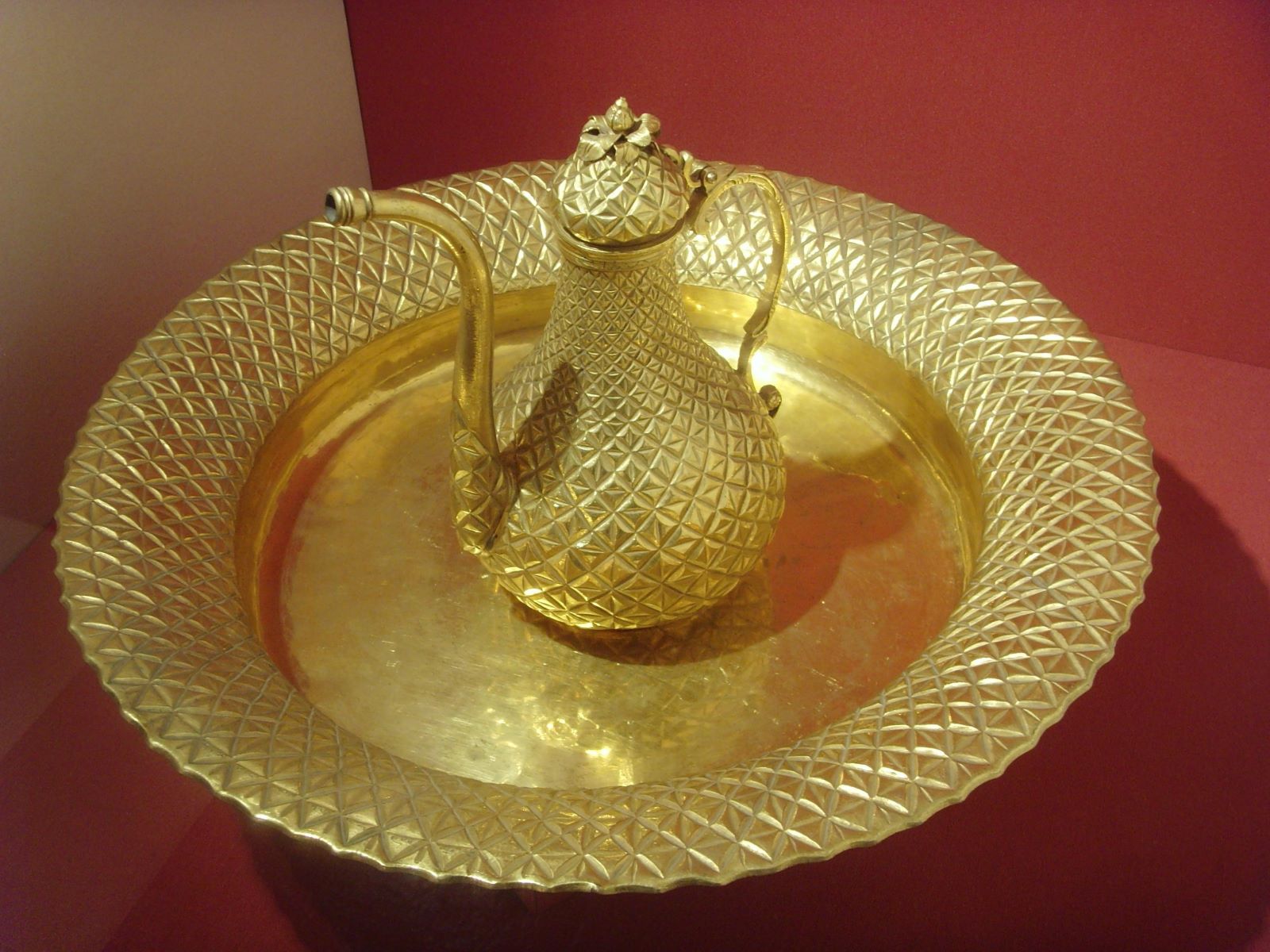
Tombac is a fascinating metal alloy that often flies under the radar. But what exactly is it? Tombac is a brass-like alloy primarily composed of copper and zinc, sometimes with a touch of tin or lead. This unique blend gives it a golden hue, making it a popular choice for decorative items, coins, and even musical instruments. Its durability and resistance to corrosion make it practical for various applications. Ever wondered why some old coins have that distinct, rich color? Chances are, they’re made of tombac. Ready to dive into more intriguing facts about this versatile material? Let's get started!
Key Takeaways:
- Tombac, a golden metal alloy, is a versatile material made of copper and zinc. It's used for jewelry, coins, and even musical instruments due to its durability and aesthetic appeal.
- With its unique properties and eco-friendly nature, Tombac is a valuable material for art, design, and scientific applications. It's non-toxic, recyclable, and has a beautiful golden hue.
What is Tombac?
Tombac is a fascinating metal alloy with a rich history and unique properties. Often used in various applications, it combines the best of copper and zinc. Let's dive into some intriguing facts about this versatile material.
- Tombac is an alloy primarily composed of copper and zinc, with copper making up about 84-90% of the mixture.
- The name "Tombac" is derived from the Indonesian/Malay word "tembaga," which means copper.
- Tombac has a golden appearance, making it a popular choice for decorative items and jewelry.
- This alloy is known for its excellent corrosion resistance, which makes it suitable for outdoor applications.
- Tombac is often used in the production of medals, badges, and coins due to its durability and aesthetic appeal.
Historical Significance of Tombac
Tombac has played a significant role throughout history, particularly in the production of various artifacts and currency.
- Tombac was widely used in ancient China for making mirrors and other decorative items.
- During the 18th and 19th centuries, European countries used Tombac to mint coins.
- In the Ottoman Empire, Tombac was used to create intricate designs on weapons and armor.
- Tombac was also popular in the production of musical instruments, such as trumpets and saxophones, due to its acoustic properties.
- The alloy was used in the creation of military buttons and insignia during World War I and World War II.
Tombac in Modern Applications
Today, Tombac continues to be utilized in various industries, thanks to its unique properties and versatility.
- Tombac is commonly used in the manufacturing of electrical connectors and terminals due to its excellent conductivity.
- The alloy is also used in the production of high-quality locks and keys.
- Tombac is a popular choice for making costume jewelry, as it can be easily plated with gold or silver.
- In the automotive industry, Tombac is used for decorative trim and emblems.
- Tombac is often employed in the production of plumbing fixtures and fittings due to its resistance to corrosion.
Unique Properties of Tombac
Tombac's unique properties make it a valuable material for a wide range of applications.
- Tombac has a melting point of approximately 900-950°C, making it suitable for casting and molding.
- The alloy is known for its excellent ductility, allowing it to be easily shaped and formed.
- Tombac has a density of around 8.4 g/cm³, which is slightly higher than pure copper.
- The alloy is non-magnetic, making it ideal for use in electronic applications.
- Tombac has a high tensile strength, which contributes to its durability and longevity.
Environmental Impact of Tombac
Tombac's environmental impact is an important consideration, particularly in today's eco-conscious world.
- Tombac is a recyclable material, which helps reduce waste and conserve natural resources.
- The production of Tombac generates fewer greenhouse gas emissions compared to other metal alloys.
- Tombac's corrosion resistance means that products made from this alloy have a longer lifespan, reducing the need for frequent replacements.
- The alloy's non-toxic nature makes it safe for use in various applications, including those involving food and water.
- Tombac can be easily separated from other materials during the recycling process, making it an environmentally friendly choice.
Tombac in Art and Design
Tombac's aesthetic appeal and versatility have made it a popular choice among artists and designers.
- Tombac is often used in the creation of sculptures and other decorative art pieces.
- The alloy's golden hue makes it an attractive option for architectural elements, such as railings and fixtures.
- Tombac is a popular material for making custom jewelry, as it can be easily engraved and shaped.
- The alloy is also used in the production of high-end writing instruments, such as pens and pencils.
- Tombac's unique appearance and properties make it a favorite among artisans and craftsmen.
Fun Facts about Tombac
Here are some fun and lesser-known facts about Tombac that you might find interesting.
- Tombac is sometimes referred to as "red brass" due to its reddish-gold color.
- The alloy is often used in the production of musical instrument mouthpieces, as it provides a warm, rich tone.
- Tombac has been used in the creation of various historical artifacts, including ancient coins and jewelry.
- The alloy is known for its ability to develop a natural patina over time, adding to its aesthetic appeal.
- Tombac is sometimes used as a substitute for gold in costume jewelry, as it closely resembles the precious metal.
Tombac in Science and Technology
Tombac's unique properties make it a valuable material in various scientific and technological applications.
- Tombac is used in the production of precision instruments, such as calipers and micrometers.
- The alloy is also employed in the manufacturing of laboratory equipment, including beakers and test tubes.
- Tombac's excellent conductivity makes it a popular choice for electrical components and circuitry.
- The alloy is used in the production of heat exchangers and radiators due to its thermal conductivity.
- Tombac is often utilized in the aerospace industry for various components, thanks to its strength and durability.
Tombac's Fascinating World
Tombac, a brass alloy, has a rich history and many uses. Known for its golden hue, it’s often mistaken for gold. This alloy, made from copper and zinc, sometimes includes tin or lead. Tombac’s durability makes it ideal for coins, medals, and jewelry. Its unique properties also make it useful in musical instruments and decorative items.
Collectors and historians appreciate tombac for its historical significance. It’s been used in various cultures for centuries. The alloy’s versatility and beauty continue to captivate people today.
Understanding tombac’s composition and uses helps us appreciate its role in history and modern applications. Whether you’re a collector, historian, or just curious, tombac offers a glimpse into the past and its ongoing relevance. So next time you see a shiny, golden object, it might just be tombac, a metal with a story to tell.
Frequently Asked Questions
Was this page helpful?
Our commitment to delivering trustworthy and engaging content is at the heart of what we do. Each fact on our site is contributed by real users like you, bringing a wealth of diverse insights and information. To ensure the highest standards of accuracy and reliability, our dedicated editors meticulously review each submission. This process guarantees that the facts we share are not only fascinating but also credible. Trust in our commitment to quality and authenticity as you explore and learn with us.


